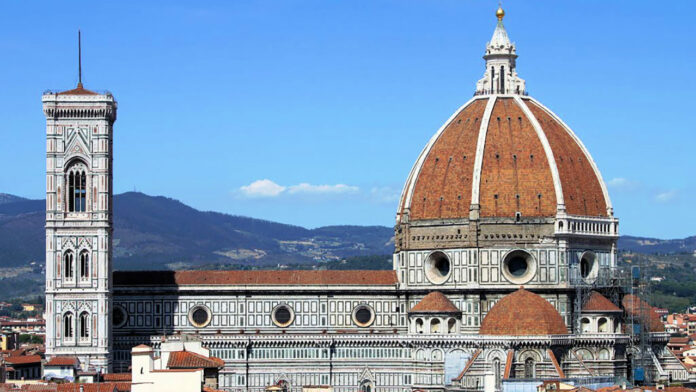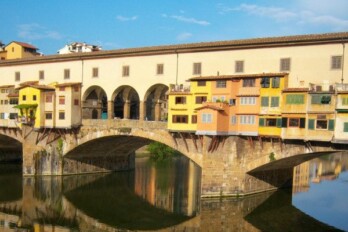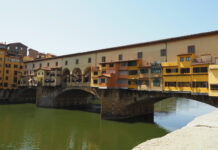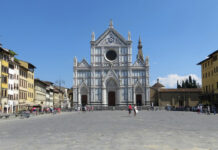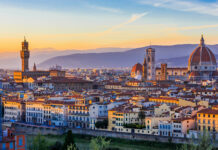Completed in 1436, at the time the Duomo in Florence was the largest Christian church in the world. Today the religious building, the official name of which is Cathedral of Santa Maria del Fiore, is third in terms of dimensions after St. Peter’s in Rome and St Paul’s Cathedral in London. Brunelleschi’s Dome, still the tallest construction in the city, is a symbol known all over the world.
Designed by Arnolfo di Cambio at the end of the 13th century on the foundations of the church of Santa Reparata, and finished in the 15th century, the church is dedicated to Santa Maria del Fiore in reference to the lily, symbol of the city. Together with Brunelleschi’s Dome, Giotto’s Bell Tower, the Baptistery of San Giovanni, Santa Reparata and the Museo dell’Opera del Duomo, the Cathedral of Santa Maria del Fiore constitutes one big monumental complex: an open-air museum located in the main square of the Tuscan capital, Piazza del Duomo, the religious, historical and artistic centre of the city. It is worth visiting the Museo dell’Opera del Duomo, where works of art from the sacred complex are preserved and where a grandiose reconstruction of the first unfinished 14th-century façade of the Duomo is reproduced, just as Arnolfo di Cambio had designed it: a Gothic style that seemed decidedly modern at the time. The museum also houses the Pietà Bandini, the most personal and intimate work of Michelangelo, who created it as his last memory with his burial in mind.
Among the various architectural works that have seen the succession of famous workers – including Giotto, Andrea Pisano, Francesco Talenti and Giovanni di Lapo Ghini – the most important is the façade that reproduces the 14th-century Florentine decorations in line with the adjacent Bell Tower. The interiors, on the other hand, are in a sober Gothic style, where the stained glass windows by Donatello, Paolo Uccello, Andrea del Castagno and Lorenzo Ghiberti stand out. But the architectural masterpiece par excellence is undoubtedly the grandiose octagonal dome.
It is the largest dome in the world that also makes people talk about itself for its history. It all began in 1418 with a competition of the Opera del Duomo for the design, which would be entrusted to Filippo Brunelleschi and Lorenzo Ghiberti. Ghiberti, having surpassed Brunelleschi a few years earlier in another competition, had already obtained the opportunity to create one of the doors of the Baptistery of San Giovanni. Disappointed by the defeat, Brunelleschi had moved to Rome to study the architecture of the Pantheon. Determined to fight Ghiberti, he pretended to be ill and let him face the challenge of the Florentine dome alone, knowing that he would not be up to the challenge. In fact, the work came to a standstill and to highlight his colleague’s inability, Brunelleschi returned from Rome, easily conquering the role of unique director of the works: with his skills and his studies on the construction techniques of the ancient Romans, he succeeded in a feat considered impossible, that is building the largest dome in the world.
Symbol of architectural perfection, Brunelleschi’s Dome is made up of two ogival-shaped caps connected to each other, without any support inside, where a large cavity allowed the workers to pass through. Inaugurated in 1436, it is 50 metres high with a diameter of 46 metres and was decorated by Giorgio Vasari and Federico Zuccari with wonderful frescoes representing the Last Judgement. At the base of the marble lantern at the top of the dome, 91 metres above the ground, there is a panoramic terrace overlooking the city.





